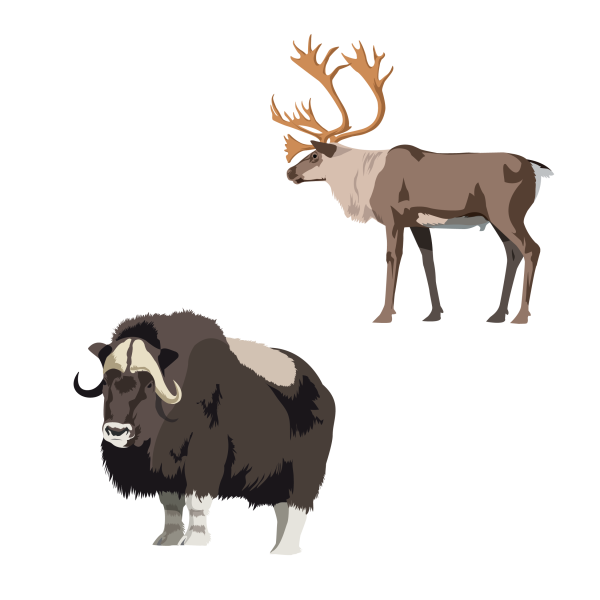Large herbivore mammals (Terrestrial)
Rangifer
- Ecosystem: Terrestrial
- Species group: Mammals
- Publications: Arctic Coastal Biodiversity Monitoring Plan Arctic Terrestrial Biodiversity Monitoring Plan

Muskox and caribou/reindeer
Jose A. Sencianes
Jose A. Sencianes
Download this table as CSV
| FECs Group | Parameter | Attributes | Priority | Extreme Events | Scale | Complexity | Recurrance | Method | Notes |
|---|---|---|---|---|---|---|---|---|---|
| Large herbivore mammals (Terrestrial) | Abundance | Number Density | Essential |
| Basic | 3 years | Aerial/land-based surveys methodology is particularly recommended | ||
| Large herbivore mammals (Terrestrial) | Demographics | Age structure Mortality Fecundity | Essential |
| Basic | 3 years | Aerial/land-based surveys methodology is particularly recommended | ||
| Large herbivore mammals (Terrestrial) | Spatial structure | Distribution of migratory herds | Essential |
|
| 3-5 years | Telemetry and aerial/land-based surveys methodologies are particularly recommended. Monitoring of seasonal changes in spatial structure may be needed for e.g. migratory species | ||
| Large herbivore mammals (Terrestrial) | Health | Pathogen prevalence and intensity Body condition Contaminants | Essential |
|
| Annually | Monitoring parasites (e.g., botflies or other groups can be considered where capacity exists). Harvest records, tissue samples methodologies are particularly recommended. | ||
| Large herbivore mammals (Terrestrial) | Diversity | Heterozygosity Population genetics and connectivity Breeding | Essential | Local | Advanced | 3-5 years | DNA analysis methodlogy is partiularly recommended | ||
| Large herbivore mammals (Terrestrial) | Phenology | Parturition Breeding | Essential |
| Basic | Annually | Telemetry and survey methodologies are particularly recommended. Monitoring of seasonal changes in spatial structure may be needed for e.g. migratory species | ||
| Large herbivore mammals (Terrestrial) | Number, density | Essential |
| Basic | 3 years | Aerial/land-based surveys methodology is particularly recommended |
For Rangifer in particular, conservation efforts often focus on specific cotypes or genetic types. Good examples include forest Rangifer in North America and specific populations of Arctic Island Rangifer.
 Arctic Council Working Group
Arctic Council Working Group